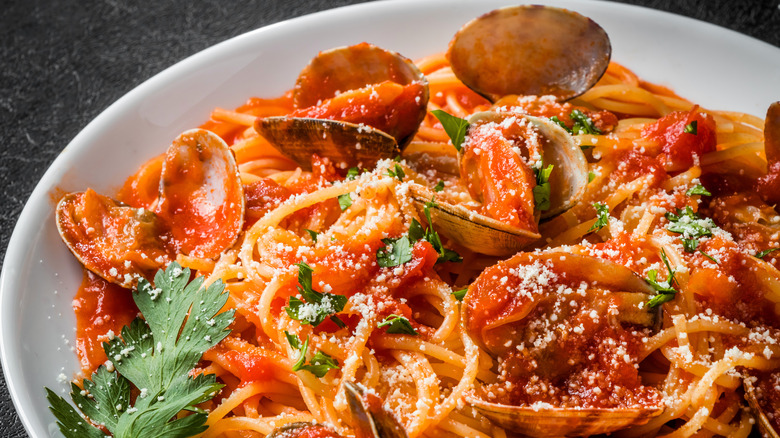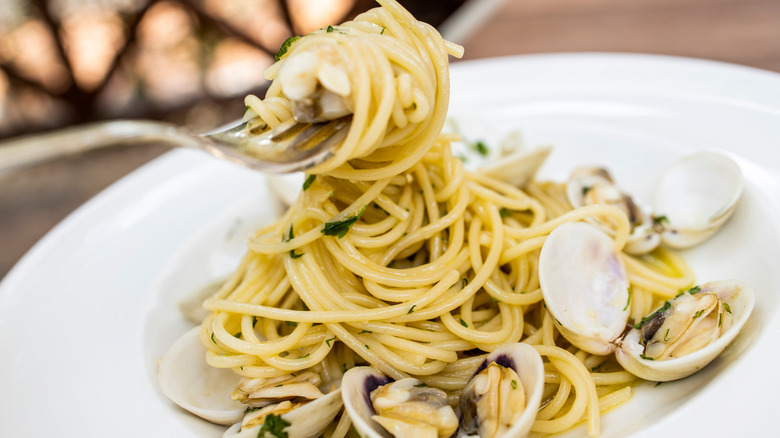The Difference Between White And Red Clam Sauce
Clam sauce is a quick and easy accompaniment to pasta, and to all of our benefit, it comes in two different, tasty forms. Those familiar with it likely sampled a white clam sauce, the Italian creation (seen above) that's based around fresh clams and is commonly paired with spaghetti or linguine. It's a simple sauce that combines white wine, garlic, olive oil, and red pepper to create a light yet pleasantly briny flavor. It's the more common way to prepare a clam dish as it follows the Italian culinary paradigm that attempts to highlight the flavor of a single fresh ingredient using minimal extraneous additions.
The other option is red clam sauce. And while there are variations in how it's prepared, the one big difference with red sauce is the addition of tomatoes. The tomatoes bring an extra brightness and acidity to the clam sauce that evokes the flavor of a simpler frutti di mare and brings a fresher element to what can typically be a pretty salty, creamy dish. Beyond the tomatoes, red clam sauce can remain similar to white clam sauce, but it can also add elements like anchovies and subtract things like the wine. The only sure constant is clams.
Tomatoes can transform a classic clam sauce into red clam sauce
To make a classic white clam sauce, start by sautéing garlic and red pepper flakes in olive oil, then add white wine and reduce it for depth. Some recipes also call for bottled clam juice for more seafood flavor. For the clams, in the shell is traditional, but canned whole clams work well and save some effort. Either one gets cooked in the sauce for a few minutes until warmed or until the whole clams have opened, then it's just a matter of mixing in the pasta, ideally with a few splashes of starchy pasta water to help thicken the liquid into a proper sauce.
For red clam sauce, your options expand. You can make a dish exactly like white clam sauce, but add some fresh chopped tomatoes to simmer for a bit after the garlic and red pepper. Or you can flip the script and start with a basic tomato sauce that you simmer down, but add some whole or canned clams for a briny boost. The only rule to look out for in the red variation is not to use so much sauce that the tomatoes overpower the seafood flavors; you want some clam in every bite — this is still called clam sauce for a reason. But whichever you choose, red or white, clam sauce is one of the easiest, tastiest pasta dinners you can make with minimal effort.

